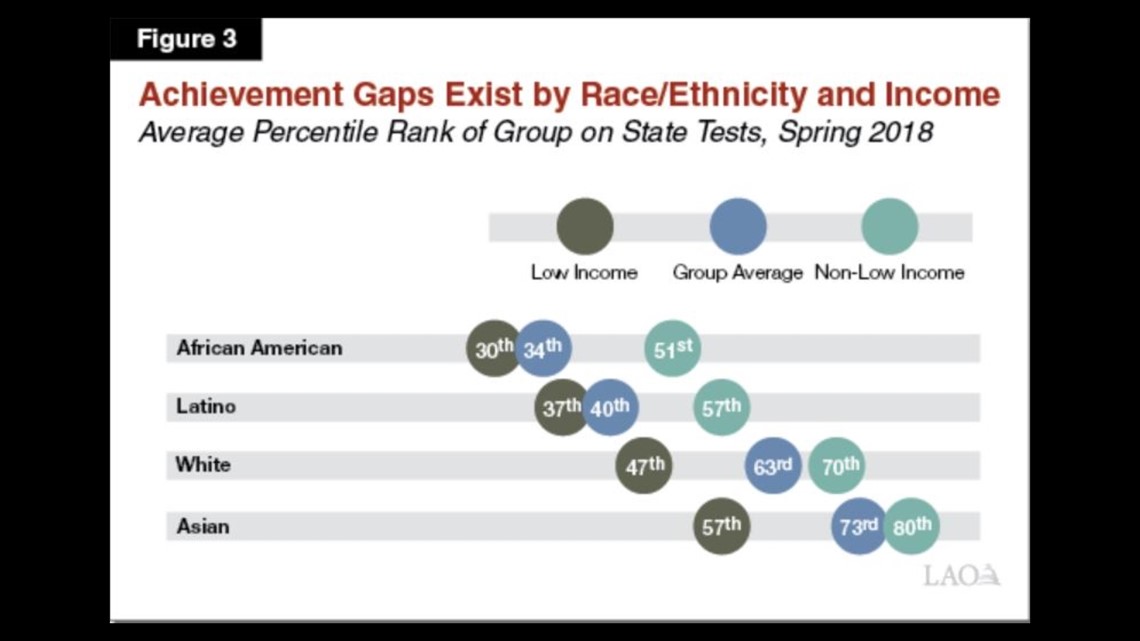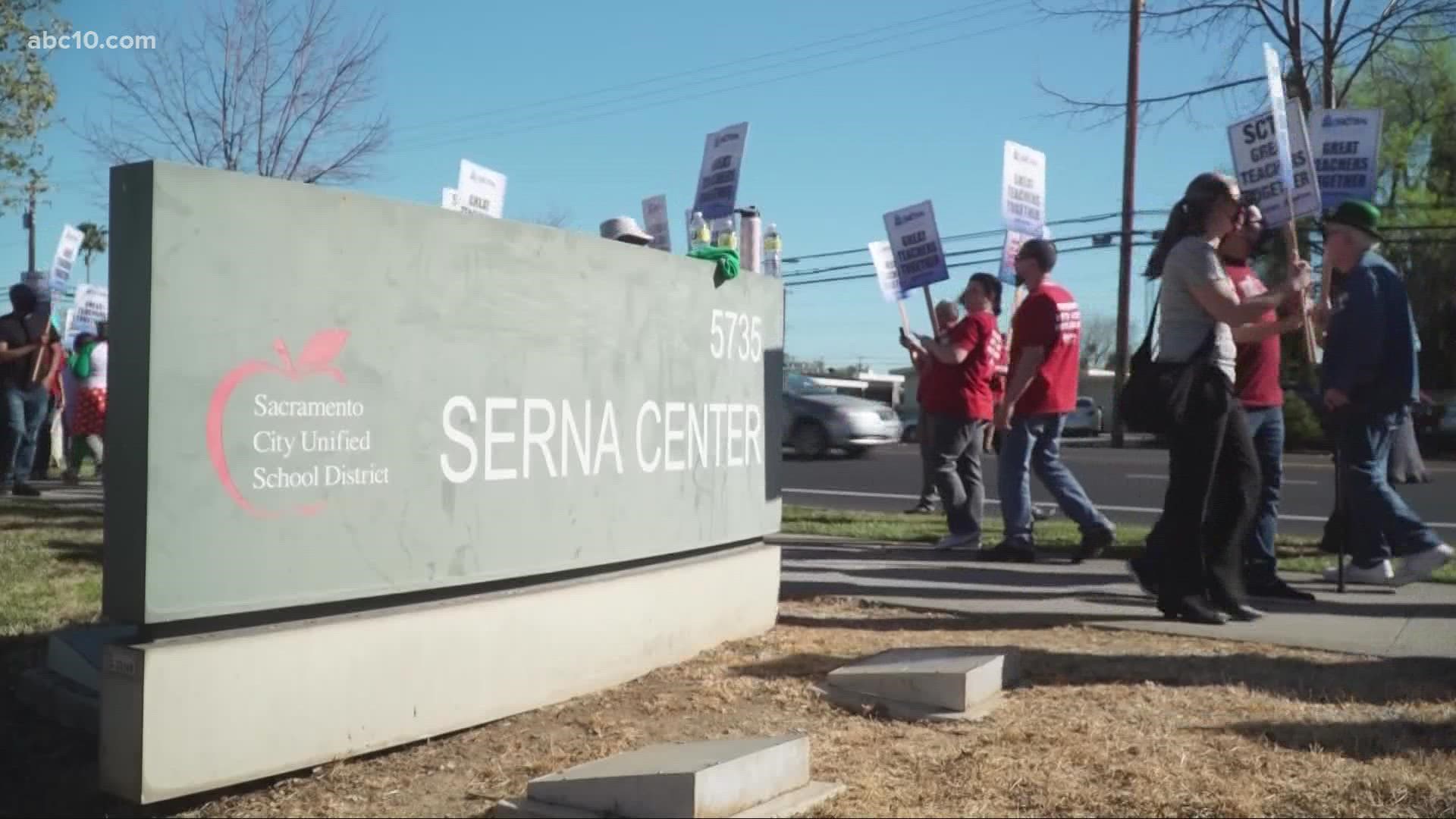SACRAMENTO, Calif. — In California, the student achievement gap is large and persistent.
During the 2020-21 academic year, more than 6 million K-12 students were enrolled in public schools in California, according to data from the California Department of Education.
When the COVID-19 pandemic hit the U.S., California experienced a sharp decline in student enrollment. That includes a decrease of more than 160,000 students and 2.6% from the prior year.
The pandemic disrupted all aspects of public education, including school enrollment, attendance, assessment scores, student and family engagement, and student learning.
The student achievement gap - disparities in academic performance between groups of students - existed before the pandemic. But, the pandemic made matters worse.
Black students have one of the lowest graduation rates in California. At the end of the 2020-21 school year, graduation rates for Black students statewide dropped by 4%, according to data from the California Department of Education. It shows graduation rates for Black students statewide went from 76% in the previous school year to 72%.
When compared to their counterparts, white students experienced a slight increase in graduation rates during the 2020-21 school year. They went from 87% from the previous school year to 88%.
Black students, along with other students of color, also suffer the most when it comes to other academic performance measures, such as attendance, suspension rates, and college readiness.


In response to concerns over K-12 student achievement gaps, the California State Legislature tasked the Legislative Analyst's Office (LAO) to create a working group to help address the problem with a report to be submitted by February 1, 2020.
The group had representatives from both houses of the Legislature, the administration, including the Department of Finance, and the California Department of Education (CDE). They met five times over the course of fall 2019. The required report:
- Examines data on K-12 student achievement gaps
- Identifies funding provided for disadvantaged and low-performing students
- Assesses existing state efforts to serve these students
- Develops options for better supporting these students
In the report, LAO explains that "low‑income students, English learners, students with disabilities, foster youth, and homeless youth also have worse outcomes on average than other students."
The group also explains how achievement gaps are influenced by many factors outside and inside the education system. That includes 'family characteristics, residential segregation, health disparities, public safety issues, and school quality.'
The work group encourages the Legislature to consider the following:
- Require certain achievement gap information be more readily available
- Monitor implementation of new California School Leadership Academy
- Create standards for county offices of education in reviewing Local Control and Accountability Plan
- Support intensive intervention in districts with persistent achievement gaps
- Establish key elements of academic crisis assistance program
As California continues to search for new strategic ways to tackle the student achievement gap, parents, along with education advocates, remain concerned about students falling behind in classrooms. That includes students of color, students with disabilities, and students faced with homelessness.
When the pandemic hit, U.S. school districts went remote to help prevent the spread of the virus. The remote learning, however, resulted in a wider education gap. Most students returned to campus in the spring, either with full-time or hybrid - in-class and remote - instruction.
Keon Johnson wants the best education for his son, Jah'sun Johnson, who attends Sacramento High School. When Sacramento City Unified School District (SCUSD) implemented remote learning for students, Jah'sun saw a drop in grades.
"You want to make sure that they're still getting a quality education," said Johnson. "During the pandemic, he suffered. When you go to distance learning, mom's at work and dad's at work. It's just you and a computer. He suffered in that space."
Once SCUSD returned to in-person learning, Jah'sun's grades improved, along with class engagement. But now, Johnson is worried his son will face other academic challenges due to a teacher strike at SCUSD.
The Sacramento City Teachers Association is going on strike on Wednesday after negotiations with the school district failed on Tuesday. It's not clear how long the strike will last. The unions represent more than 2,800 Sacramento educators and 1,800 staff, like bus drivers and custodians.
SCUSD already informed parents that the district will 'close all campuses.' The school district serves more than 40,000 students on 75 campuses. The student population is 40% Hispanic or Latino, 17% Asian, 14% African American, and 18% white. About 7% of students are of two or more races or ethnicities.
As a Black father, Johnson is worried the school closure will expand the racial achievement gap. Even though he supports educators, Johnson is concerned his son will get the short end of the stick. That includes the disruption and lack of access to an education.
"If the teachers say we need more staff onboard to meet our students where they need to be met, as well as more pay, then you cant argue with that," Johnson said. "But, who suffers? Our babies because these things are not already in place."

